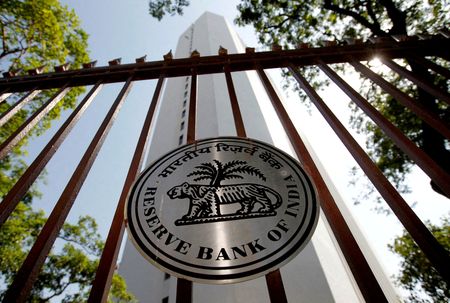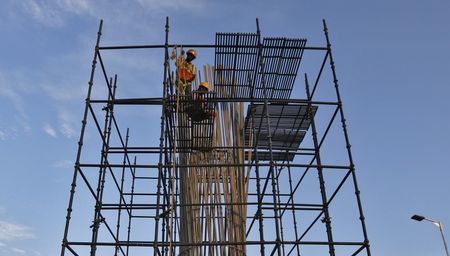By Khushi Malhotra and Swati Bhat
MUMBAI (Reuters) -The rally in India’s long-duration bonds is faltering due to dwindling demand from banks, insurers and pension funds, coupled with rising fiscal concerns and limited potential for further rate cuts, according to several investors.
Long bonds, or government securities with maturities of 10 years or more, are typically favoured by long-term investors who seek stable returns to match their future liabilities.
Slowing tax revenues and weaker nominal GDP growth are straining government finances and souring bond sentiment, already hit by the Reserve Bank of India’s signal that the bar for further rate easing will be high.
The benchmark 10-year bond yield has risen 24 basis points since the RBI’s surprise 50-basis-point rate cut in June, when it shifted its stance to “neutral” from “accommodative”. The yield is now hovering at nearly 100 basis points above the policy repo rate.
“The primary drivers of the 17 basis points rise in 10-year government securities yields in the past two weeks in our view are weak direct tax receipts, worries over higher supply, and investor positioning,” Neelkanth Mishra, chief economist at Axis Bank wrote in a note on Thursday.
The government received higher non-tax receipts in the form of RBI’s dividend payout but gross direct tax revenues fell 2% between April 1 and August 11. Nominal GDP growth is expected at 8%–8.5% in the financial year 2026, below the budget assumption of around 10%.
Still, economists do not expect the government to miss its fiscal deficit target of 4.4% of GDP for the year.
“Traction in tax collections going forward could remain critical in achieving the fiscal deficit target for the year,” economists at HDFC Bank said in a note.
DEMAND-SUPPLY MISMATCH
The bond market is also grappling with a growing mismatch between supply and demand for long-duration securities.
Axis Mutual Fund pegs gross long-bond supply at 11.98 trillion rupees, outpacing expected demand of 10.82 trillion rupees from insurers, pension and provident funds, while ICICI Prudential Life’s head of fixed income, Ketan Parikh said 30-year yields could rise to 7.30–7.40% from 7.20% without clarity on debt supply structure.
Appetite is also capped by revised held-to-maturity norms for banks and a higher equity tilt in the national pension scheme, they said.
“The 30-year bond is trading at a spread of 180 bps over overnight rates, but the supply-demand scenario is a problem,” said Shantanu Godambe, vice president, fixed income investments at DSP Mutual Fund.
“A lot of funds and investors have cut down duration as we’re nearing the end of the rate easing cycle. But if a supply cut happens as the market is expecting, then we’ll see sanctity coming back to that segment and some spread compression on the longer end.”
The RBI’s bond purchases helped absorb supply in the first half of the year, but fresh buying is unlikely in the second half following the recent cut in the cash reserve ratio, said IDFC First Bank’s chief economist Gaura Sen Gupta.
Long-duration bonds may still offer value for long-term investors, though near-term volatility remains a risk, analysts said.
“Unless India faces a significant growth shock or sees renewed momentum from Bloomberg index inclusion, the rally in long bonds is likely over,” Devang Shah, head of fixed income at Axis MF wrote in a recent note.
(Reporting by Swati Bhat and Khushi Malhotra; Editing by Nivedita Bhattacharjee)









